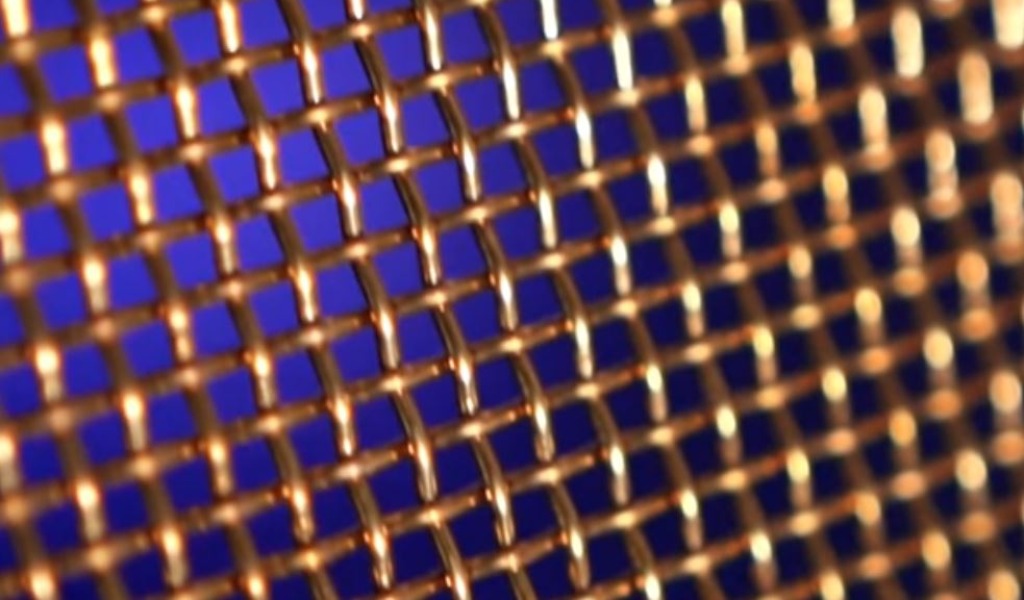How Copper Wire Stands Out in EMI Shielding Applications
Designing EMI shielding that meets modern performance expectations while staying cost-effective can be a balancing act. Material selection plays a critical role not just in conductivity and attenuation, but also in how well the shielding integrates into the overall system.
With rising demands across aerospace, telecommunications, and medical device industries, traditional materials like aluminum or stainless steel often come with compromises in weight, flexibility, or cost.
Copper wire mesh presents a compelling alternative, offering high conductivity, excellent corrosion resistance, and the ability to be easily formed into custom shielding enclosures, vents, and gaskets. Its unique material properties make it one of the most effective and adaptable shielding options available to today’s engineers.
At W.S. Tyler, our mission is to make the world cleaner and safer through precision-engineered wire mesh solutions, backed by over 150 years of experience in shielding and filtration innovation. We help engineers choose materials that optimize performance and meet demanding EMI compliance standards.
In this article, we’ll explore what makes copper wire mesh such a powerful asset in EMI shielding applications. You’ll learn why copper’s electrical and physical properties outperform many alternatives, how wire mesh form factors enhance its utility, and where it fits best within high-demand shielding environments.
The Unique Advantages of Copper in EMI Shielding Design
When designing for electromagnetic interference (EMI) protection, the choice of shielding material is foundational. Each material presents a distinct combination of electrical conductivity, durability, weight, and ease of fabrication.
Copper stands out in nearly every category that matters for effective EMI control.
Copper’s primary advantage lies in its exceptional electrical conductivity, which enables it to attenuate electromagnetic waves more efficiently than many other metals. This high conductivity ensures that less material is required to achieve high shielding effectiveness, which can reduce both weight and cost in the final product.
Additionally, copper naturally resists corrosion, which enhances longevity and performance in environments where oxidation or moisture might otherwise degrade shielding performance.
Another unique benefit is copper’s formability. It can be woven into extremely fine mesh patterns that maintain airflow and flexibility without sacrificing EMI protection. This makes it a favorite for applications where solid metal enclosures are too heavy, bulky, or restrictive.
From its compatibility with soldering and plating processes to its effectiveness across a broad range of frequencies, copper continues to offer design engineers a powerful and versatile material for tackling today’s EMI challenges.
Want to discover more about the standards that are most critical to your EMI shielding success? Read more in our article below:
How Copper Wire Mesh Combines Conductivity and Customization
Copper wire mesh offers more than just conductivity, it provides a customizable solution that aligns with the evolving demands of EMI shielding across industries. Whether you’re designing compact consumer electronics, aerospace components, or medical devices, copper mesh delivers a unique balance of performance, flexibility, and design freedom.
At its core, copper’s high conductivity allows for excellent EMI attenuation, even when used in lightweight and compact shielding configurations. This enables manufacturers to maintain critical performance standards while minimizing added material mass. But conductivity alone isn’t what makes copper mesh so versatile, as it’s the ability to tailor the weave, wire diameter, and mesh count to meet precise application requirements that truly set it apart.
Need a mesh that allows airflow without compromising shielding effectiveness or a tighter weave for high-frequency attenuation? Copper has the ability to do that as the adaptability of woven copper mesh gives engineers and designers the control they need to meet both technical specs and real-world constraints.
By combining reliable shielding performance with a highly customizable form factor, copper wire mesh stands as a modern answer to increasingly complex EMI design challenges.
Where Copper Excels Compared to Other Shielding Materials
While materials like aluminum and stainless steel have their place in EMI shielding, copper stands out in several critical areas, particularly where performance, adaptability, and longevity intersect.
First, copper’s superior conductivity gives it a distinct advantage in shielding effectiveness. It requires less material to achieve the same or better attenuation levels compared to other metals, making it ideal for compact or weight-sensitive designs.
In high-frequency applications, this conductivity can mean the difference between compliance and failure in EMI testing.
Copper also offers exceptional corrosion resistance, especially when compared to materials like bare steel. This makes it well-suited for environments where moisture, temperature fluctuations, or chemical exposure are concerns. In industrial applications, this durability translates to longer-lasting, more reliable shielding.
Additionally, copper is easier to form and fabricate, particularly in wire mesh configurations. Its malleability allows for tighter weaves, complex shapes, and seamless integration into gaskets, enclosures, and ventilation components.
These are capabilities that are generally harder to achieve with more rigid or brittle materials.
Lastly, copper is non-magnetic, eliminating potential magnetic interference and making it the material of choice in sensitive instrumentation and signal processing environments.
For engineers seeking a balance of performance, longevity, and design flexibility, copper continues to be a top-tier material for EMI shielding applications.
Shielding Performance Starts With the Right Alloy
Designing for EMI protection involves more than just selecting a conductive material, it’s about finding a solution that supports efficiency, long-term reliability, and compliance with complex industry standards. As electronic systems evolve and performance thresholds rise, the materials you choose become central to the success of your design.
Copper wire mesh brings a compelling mix of electrical performance, adaptability, and corrosion resistance to the table. Its ability to maintain high shielding effectiveness while remaining easy to integrate makes it a smart choice for engineers building next-generation systems.
At W.S. Tyler, our mission is to make the world cleaner and safer through precision-engineered wire mesh solutions. Backed by over 150 years of innovation, we partner with engineering teams to streamline material decisions and bring clarity to shielding design.
Interested in learning more about the mesh specs that matter for EMI shielding? Learn more about it in our article below:
About Dylan Polz
Dylan is a Content Writer with 2 years of experience in marketing and SEO. Passionate about learning and strengthening his writing skills, he is currently expanding his expertise in particle analysis and woven wire mesh technologies. With a strong belief in the power of information to drive positive change, his goal is to develop content that supports cleaner, safer solutions across all industries.



